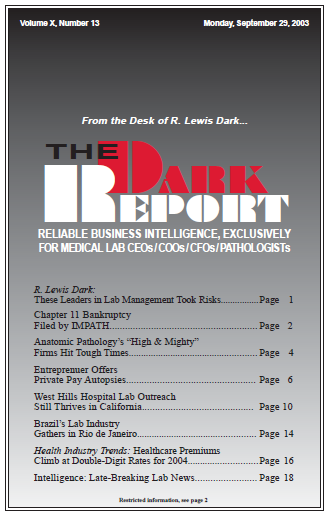CEO SUMMARY: For the past 14 years, a non-pathologist entrepreneur has enjoyed a growing business in offering autopsy services to clients willing to pay out-of-pocket. By design, the business is limited to the Southern California region. But demand in that region is enough to regularly engage the autopsy services of six pathologists. Here’s a look …
Entrepreneur Offers Private Pay Autopsies Read More »
To access this post, you must purchase The Dark Report.


